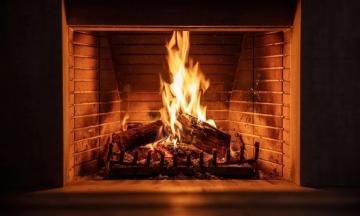
4 Interesting Facts To Know About Fireplaces This Winter
After the clocks "fall back," the thought of a warm, inviting fireplace becomes more appealing. Of course, safety comes first. Make sure you have your chimney professionally cleaned each year, and have a fireplace specialist confirm your flue is working correctly and drawing smoke and fumes up and out of your home. Check your fire screen's condition, and talk to your kids about fire safety.
When you're sure you've addressed necessary safety precautions, take time to explore these four interesting facts to know about fireplaces this winter. This information provides a more lighthearted look at fireplace history and presents some benefits and advancements in fireplace technology.
Benjamin Franklin Improved Fireplace Design
Benjamin Franklin, known for his many inventions and contributions to society, also left his mark on fireplace design. He invented the Franklin Stove in the mid-18th century, a metal-lined fireplace designed to produce more heat and less smoke than traditional open fireplaces. His invention was a significant step forward in making fireplaces safer, more efficient, and more comfortable to use.
A 15th Century French Scholar First Suggested Fireplaces as Portals
Fireplaces have been a part of human dwellings for centuries. However, the idea of using them as portals originated in the 15th century. French scholar Petrus Mamoris tried to deter belief in supernatural beings that could walk through walls by suggesting that witches, elves, and fairies simply came down the chimney instead.
Poet, author, and polyglot François Rabelais also suggested that fireplaces could offer portals to other worlds in his series of satiric works about monsters Gargantua and Pantagruel, published in the 16th century.
More recently, fireplace portals appeared in the Harry Potter series of books. While the portal idea remains in the realm of fantasy, it underscores the enduring allure and romanticism associated with fireplaces.
Watching and Listening to a Wood-Burning Fire Can Lower Your Blood Pressure
The calming effect of a wood-burning fire is not just psychological. According to a study conducted by the University of Alabama, watching and listening to a wood-burning fire can lower your blood pressure. The flickering flames and soothing crackle make fireplaces more than just sources of physical warmth; they also become tools for relaxation and stress relief.
Fireplace Inserts Improve Efficiency as Much as 80 Percent
If you are concerned about energy efficiency, a fireplace insert might be the perfect solution. These are units that fit into an existing fireplace, converting it into a more efficient heat source. An experienced fireplace supplier can show efficiency ratings, ranging from 50–80 percent, of different types of inserts that may fit your fireplace.
These interesting facts about fireplaces not only highlight their historical significance but also underline their continued relevance in modern times. From Benjamin Franklin's inventive design to the therapeutic benefits of wood-burning fires and the remarkable efficiency of fireplace inserts, there is more to fireplaces than meets the eye. As you cozy up next to your fireplace this winter, you can appreciate it not just for its warmth but also for its rich history and impressive features.

